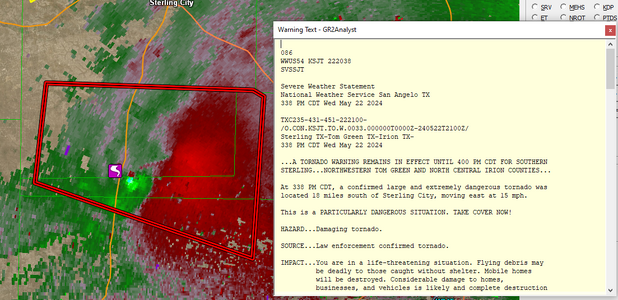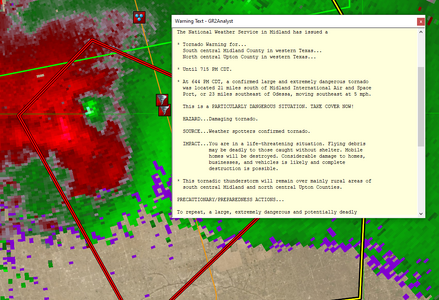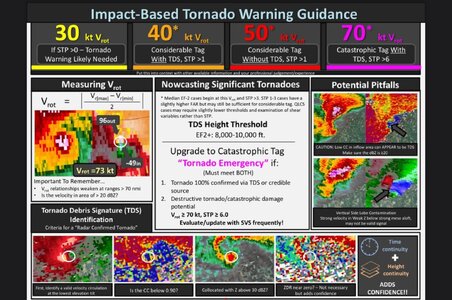Caught this in real-time: there is currently a PDS tornado warning for a location in W TX that is described as being "rural" (the warning text includes no place names to warn).

The LSR says it is a law-enforcement confirmation, which already leads me to think the threat may be a bit over-emphasized. The NWS Tornado Warning feed for this says 58 people live in the polygon:
This leads me to ponder a philosophical question, even though the underpinnings are more political: is this truly a "particularly dangerous scenario" that the impacts based warnings paradigm that the NWS instituted several years ago was meant to cover? I would argue that it isn't. But then again, I suppose there is a flowchart somewhere that includes a chain ending in "if law enforcement confirms a tornado and there is a velocity couplet, then it must be PDS warned." Maybe not.
What do the rest of you think?
Also, yes, I'm aware that the PDS designation was removed a few minutes after it was warned. Maybe this was just a mis-click after all. But this is not the only time I've seen a PDS tag on a warning that I wouldn't have judged as PDS. Perhaps we could start a list of such examples here for statistical examination!

The LSR says it is a law-enforcement confirmation, which already leads me to think the threat may be a bit over-emphasized. The NWS Tornado Warning feed for this says 58 people live in the polygon:
This leads me to ponder a philosophical question, even though the underpinnings are more political: is this truly a "particularly dangerous scenario" that the impacts based warnings paradigm that the NWS instituted several years ago was meant to cover? I would argue that it isn't. But then again, I suppose there is a flowchart somewhere that includes a chain ending in "if law enforcement confirms a tornado and there is a velocity couplet, then it must be PDS warned." Maybe not.
What do the rest of you think?
Also, yes, I'm aware that the PDS designation was removed a few minutes after it was warned. Maybe this was just a mis-click after all. But this is not the only time I've seen a PDS tag on a warning that I wouldn't have judged as PDS. Perhaps we could start a list of such examples here for statistical examination!


